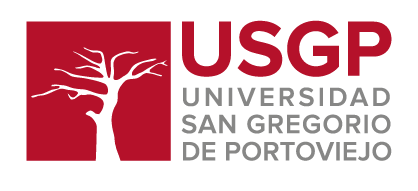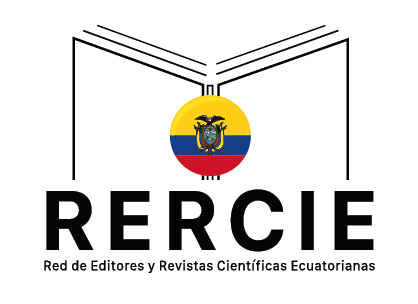Hábitos alimentarios y su relación con la erosión dental: una revisión sistemática
DOI:
https://doi.org/10.36097/rsan.v1i55.2478Palabras clave:
hábitos alimentarios, erosión dental, acidez de los alimentos, lesiones erosivasResumen
La erosión dental corresponde a la pérdida irreversible de la superficie dental por la acción química de los ácidos, donde las bacterias no interfieren. Las lesiones erosivas se caracterizan clínicamente por una superficie lisa, opaca y transparente, un contorno de esmalte intacto en el margen gingival, pérdida de la morfología dental, presencia de depresiones superficiales y caries, y en casos severos afectan la dentina y la pulpa dental. Uno de sus factores etiológicos son los hábitos alimentarios, puesto que los ácidos de los alimentos son precursores para la erosión dental. El objetivo del presente estudio fue determinar la relación existente entre los hábitos alimentarios y la erosión dental. Se realizó una revisión sistemática, empleando como fuentes de información la SciELO, Redalyc, Medigraphic, PubMed, ResearchGate, y el metabuscador Google Académico, de los trabajos publicados entre el 2017-2021. La búsqueda estuvo basada en el estudio de las variables: erosión dental; corrosión dental, hábitos alimentarios; tratamiento y prevención de la erosión dental. Se pudo determinar que la relación entre los hábitos alimentarios y la erosión dental se debe a la acidez de los alimentos, el ácido es la principal causa de erosión y la posibilidad de erosión aumenta con la frecuencia de su ingesta. El conocimiento de los alimentos causantes de la patología garantiza una prevención directa y evita la ejecución de tratamientos invasivos.
Descargas
Referencias
Almonte Y. S.; Núñez G. M.; Otárola, W. G. (2021). Erosion dental: una breve revisión. Revista Odontológica Basadrina, -5(1), 67-73._ https://doi.org/10.33326/26644649.2021.5.1.1089
AlShahrani M.T.; Haralur S. B.; Alqarni, M. (2017). Restorative Rehabilitation of a Patient with Dental Erosion. Hindawi- Case Reports in Dentistry, 1-6. https://doi.org/10.1155/2017/9517486
Alvarado, M. A.; Ibarra, M. J.; Ordoñez, P. E. (2021). Prevalencia de lesiones cervicales no cariosas en el Ecuador. Una revisión de la literatura. Revista OActiva, 6(2), 1-6. https://oactiva.ucacue.edu.ec/index.php/oactiva/article/view/553/664
Boitelle, P. (2019). Contemporary management of minimal invasive aesthetic treatment of dentition affected by erosion: case report. BMC Oral Health, 19(123), 1-8. https://doi.org/10.1186/s12903-019-0807-4
Capell, J. R. y Formoso, A. (2020). Dietas ácidas y erosión dental. Revista Especializada de Ortodoncia, 50, 142-147. https://www.revistadeortodoncia.com/files/reo_20_50_3_142-147.pdf
Costa, J. G.; Martins, J. P.; Galvao, E. B.; Soares, N. L.; Meira, I. A. y Sampaio F. C. (2021). Influence of energy drinks on enamel erosion: In vitro study using different assessment techniques. Journal section: Community and Preventive Dentistry, 13(11), 1076-1082.. https://doi.org/10.4317/jced.57788
Donovan, T.; Nguyen-Ngoc, C.; Alraheam, I. A.; Irusa, K. (2021). Contemporary diagnosis and management of dental erosion. Journal of Esthetic and Restorative Dentistry, 33(1), 78-87. https://onlinelibrary.wiley.com/doi/epdf/10.1111/jerd.12706
Gallardo, D. H.; Arencibia, R.; Linares-Girela, D.; Murillo-Plúa, D. C.; Bosques-Cotelo; J. J. y Manrique, M. L. (2021). Condición nutricional y hábitos alimenticios en estudiantes universitarios de Manabí, Ecuador. Revista Española de Nutrición Comunitaria, 27(1), 1-13. https://www.renc.es/imagenes/auxiliar/files/RENC_2021_1_03._-20-0042.pdf
Guevara, M.; Tejera, E.; Granda-Albuja, M. G.; Iturralde, G.; Chisaguano-Tonato, M. y Granda-Albuja, S. (2019). Chemical Composition and Antioxidant Activity of the Main Fruits Consumed in the Western Coastal Region of Ecuador as a Source of Health-Promoting Compounds. Antioxidants MDPI, 8(9), 387. https://www.mdpi.com/2076-3921/8/9/387/htm
Hartz, J. J.; Procopio, A.; Attin, T.; Wegehaupt, F. J. (2021). Erosive potential of bottled salad dressings. Oral Health & Preventive Dentistry, 19(1), 51-57. https://pubmed.ncbi.nlm.nih.gov/33491378/
Hernández-Gallardo, D.; Arencibia-Moreno, R.; Linares-Girela, D.; Murillo-Plúa, D. C., Bosques-Cotelo, J. J. y Linares-Manrique, M. (2021). Condición nutricional y hábitos alimenticios en estudiantes universitarios de Manabí, Ecuador. Revista Española de Nutrición Comunitaria, 27(1), 1-13. https://www.renc.es/imagenes/auxiliar/files/RENC_2021_1_03._-20-0042.pdf
Lastarria, L. A.; Oropeza, A. G. y Casas-Apayco, L. (2019). Prevalencia de erosión dental en estudiantes de 12 a 16 años utilizando Basic Erosive Wear Examination (BEWE) en una institución educativa pública peruana. Revista de Odontopediatria Latinoamericana, 9(1). https://backup.revistaodontopediatria.org/ediciones/2019/1/art-2/
Luciano, L.C.; Ferreira, M. C. y Paschoal, M. A. (2017). Prevalence and factors associated with dental erosion in individuals aged 12–30 years in a northeastern Brazilian city. Clinical, Cosmetic and Investigational Dentistry, 9, 85-91. https://doi.org/10.2147/CCIDE.S144150
Martínez, L. M.; Llop, M. R.; Ortells, C. S.; Menéndez, A. M. y García, C. B. (2021). Conocimientos de erosión en adolescentes españoles. Revista de Odontopediatría Latinoamericana, 11(1), 1-11. https://revistaodontopediatria.org/index.php/alop/article/view/232/246
Martínez, L. M.; Menéndez, A. L.; Llop, M. R.; Navarro, M. G. y García, C. B. (2021). Influencia de la saliva en la erosión dental en niños. Estudio transversal. Avances en Odontoestomatología, 37(3), 1-9. https://scielo.isciii.es/scielo.php?script=sci_arttext&pid=S0213-12852021000300004
Martínez, J. C.; Armas, A.; Aguilera, F. y Tello, G. (2018). Prevalencia y factores asociados del desgaste dental erosivo en niños de 8-12 años del norte de Quito, Ecuador. Revista Odontología de la Universidad Central del Ecuador, 20(1), 61-74. https://doi.org/10.29166/odontologia.vol20.n1.2018-61-74
Oliveira, A.; Sampaio, F. C.; Meira, I. A.; Gouvêa, M. G.; Soares, N. L. y Souto, V. M. (2017). Erosive potential of industrialized teas: an in vitro study. Pesquisa Brasileira em Odontopediatria e Clínica Integrada, 17(1), 3165-3167. Disponible en: https://tinyurl.com/4bhutxsd
Pazos, Y. R.; Rattia, L.V.; Villabona, N. D.; Padrón, K.; Izaguirre, C. y Vera D. D. (2017). Cambios estructurales en el tejido adamantino producidos por bebidas carbonatadas incoloras. Revista Cientifica Odontologica, 13(1), 1-10. https://www.redalyc.org/pdf/3242/324255459003.pdf
Peraza-Gutiérrez, L. y Gutiérrez-Martorel, S.T. (2020) Características clinicoetiológicas y terapéuticas en dientes con lesiones cervicales no cariosas e indicadores epidemiológicos. Revista Medica Electronica de Ciego de Ávila, 26(3). http://www.revmediciego.sld.cu/index.php/mediciego/article/view/1215/2845
Peumans, M.; Politano, G. y Meerbeek, B. V. (2020). Tratamiento de lesiones cervicales no cariadas: cuándo, porqué y cómo. The International Journal of Esthetic Dentistry, 13(1), 8-35. https://www.sepes.org/wp-content/uploads/2020/07/03-PEUMANS.pdf
Rodríguez, S.; Gonzáles, R. M.; Hernández, M. y González, J. A. (2018). El vino, ¿beneficioso o perjudicial para la salud?. Medicentro Electrónica, 22(4), 343-350. https://tinyurl.com/fjc9nex7
Suarez, M. R. (2020). Desmineralizacion y erosion dentaria, un estudio in vitro. Revista Orbis Tertius UPAL, 4(8), 79-91. https://www.biblioteca.upal.edu.bo/htdocs/ojs/index.php/orbis/article/view/5/9
Segovia, J. K.; Orellana, M. R. y Sarmiento, J. P. (2020). Estimación de la demanda de bebidas no alcohólicas en Ecuador. ECA Sinergia, 11(3), 72-83. https://revistas.utm.edu.ec/index.php/ECASinergia/article/view/2058/2854
Sihuay, M. V. ; Montes, L. G. ; Rodríguez, C. F. (2021). Erosión dental a causa de diversos jugos de frutas naturales. Revista Estomatológica Herediana, 31(2), 146-147. http://dx.doi.org/10.20453/reh.v31i2.3976
Suh, H. y Rodriguez, E. (2017). Determinacion del ph y Contenido total de azúcares y varias bebidas no alcoholicas: su relacion con la Erosion y Caries dental. OdontoInvestgacion, 3(1), 18-30. https://doi.org/10.18272/oi.v3i1.851
Tello, I. Z. y Caffo, M. K. (2019). Técnicas de rehabilitación oral con resinas y cerámica. Revista Odontológica Basadrina, 3(1), 42-45. https://tinyurl.com/2p845t6b
Trujillo-Hernández, M.; Acosta-Acosta, A. A. y Anaya, M. P. (2021). Erosión del esmalte dental en dientes expuestos a bebidas de origen industrial. Estudio piloto in vitro. International journal of interdisciplinary dentistry, 14(3), 237-241. http://dx.doi.org/10.4067/S2452-55882021000300237
Vicente-Herrero, M. T.; Iñigue, M. V. y García, L. C. (2019). Erosión dental y Factores de riesgo laboral. Medicina Balear, 34(1), 20-24. http://dx.doi.org/10.3306/MEDICINABALEAR.34.01.20
Willershausen, I.; Schulte, D.; Willershausen, B. y Azaripour, A. (2019) Impact of Green Vegetables and Green Smoothies on Enamel Mineral Composition In Vitro. Irianian Journal of Pediatrics, 29(3), 1-7. http://dx.doi.org/10.5812/ijp.85978
Descargas
Publicado
Número
Sección
Licencia
Derechos de autor 2023 María Isabel Santos Rojas, Alda Noelia Alarcón Barcia, Karla Lissette Gruezo Montesdeoca

Esta obra está bajo una licencia internacional Creative Commons Atribución-NoComercial-SinDerivadas 4.0.



















